
Build your upper body using one resistance band and five strength exercises that target your pecs, shoulders, arms, back and core muscles. If you’ve only got space in your gym bag for one piece of home gym equipment, slip a resistance band in yours.
The best resistance bands come in varying intensities, some with loop bands used for activation exercises and many with door jambs and handles, giving you access to a library of upper and lower body exercises while also working your core muscles.
It’s a myth that you can’t find a good resistance band upper body workout, you just need to choose the best exercises for your upper body and learn how to increase the intensity of each exercise to suit your fitness level. Luckily, we’ve provided both. Here’s how to build your upper body using one resistance band and why you should.
What are the 5 resistance band upper body strength exercises for beginners?
We all live by yin and yang to create balance in life — hot and cold, salty and sweet, water and fire. In the case of your upper body, it’s push and pull.
When you perform push exercises, you’ll strengthen the anterior chain muscles like the pectorals, anterior deltoids, triceps and core muscles. Pulling motions hit the posterior chain, like the various muscles in your back (the traps, lats and rhomboids, to name a few), plus your rear deltoids and biceps.
Weak back muscles and tight or overworked chest muscles can cause slumping or hunching and negatively affect your posture, also increasing the chances of exercise-related injuries, but it can be harder to target your back during a resistance band workout. Why? Because your back muscles are some of the largest and most powerful muscles in the body, alongside the gluteus maximus and quadriceps.
How do you create a balanced upper body workout for beginners using a resistance band? Try these five simple strength exercises, suitable for all levels of fitness and ability.
1. Banded standing row: Back
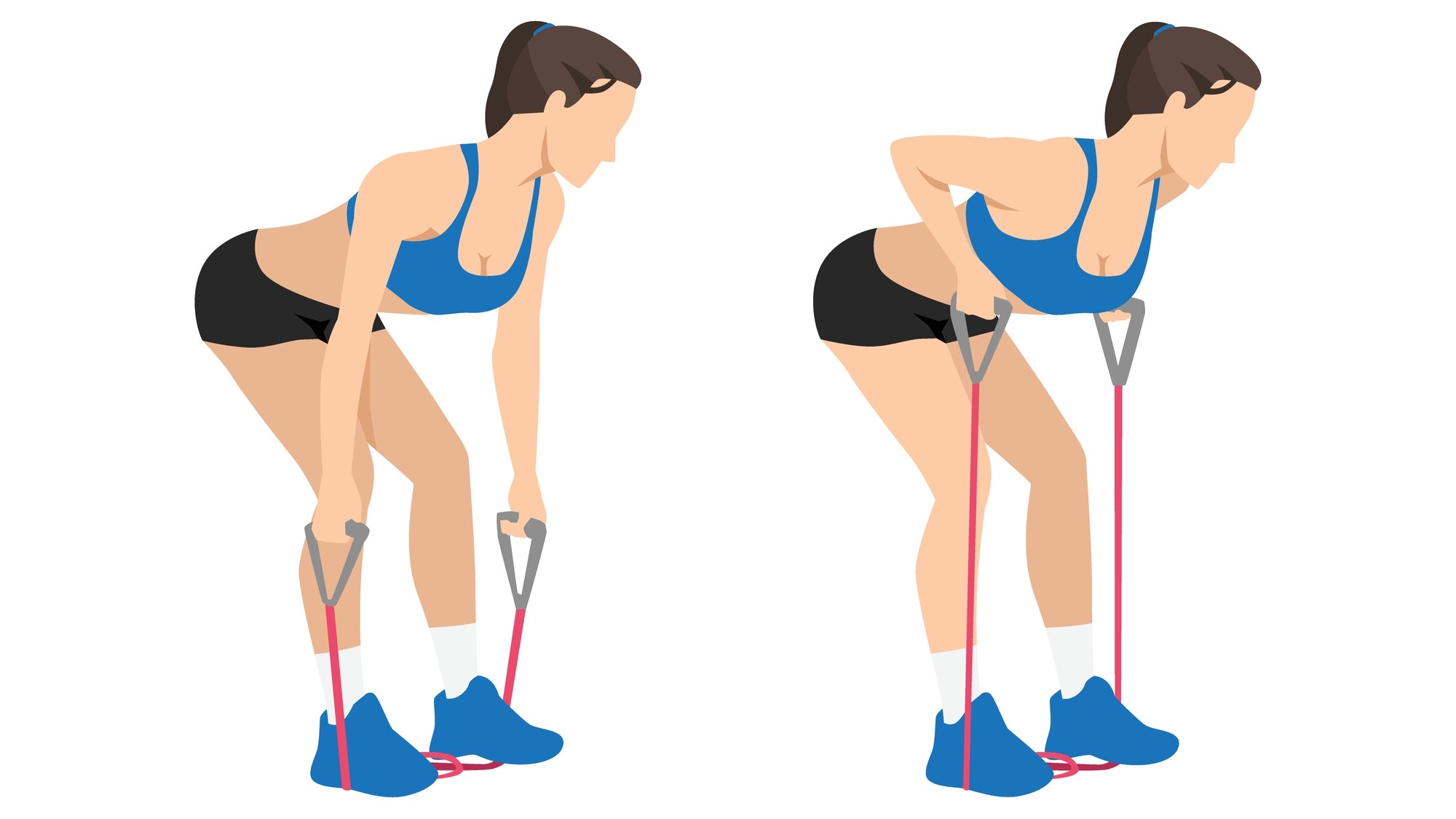
Stand with feet hip-width apart and place your feet over on one end of your resistance band. You can double-wrap the resistance band to make the exercise harder or use a band with handles attached. Hinge forward at the hips and send your bum back, maintaining a neutral spine and flat back with your chest parallel to the floor. Keeping your arms close to your body, grip the band in both hands and pull it towards your back pockets, drawing the band toward you. Pause and squeeze your shoulder blades together, then lower the band to the starting position for one rep.
2. Banded shoulder press: Chest
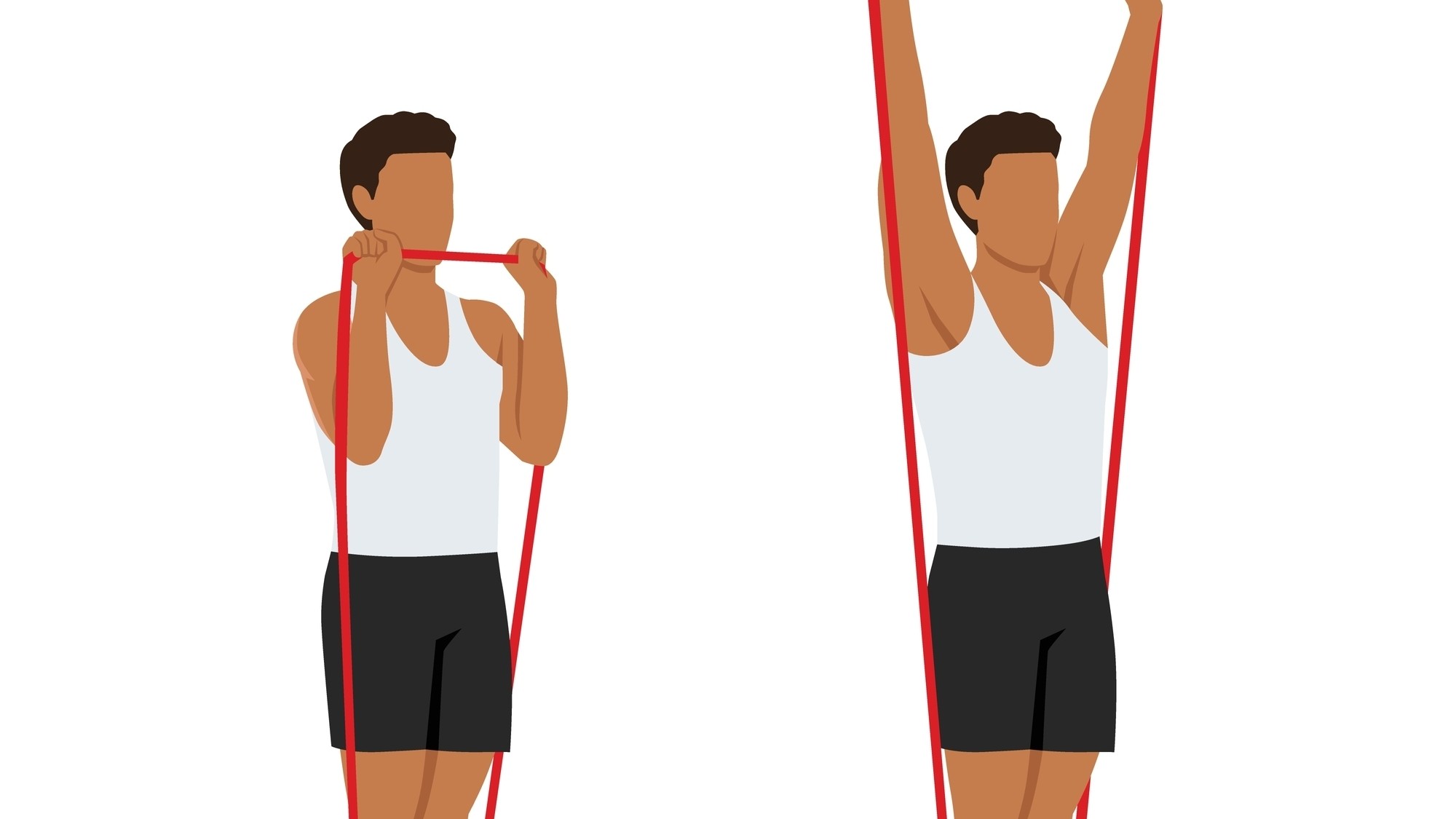
Stand with feet hip-width apart and place your feet over on one end of your resistance band. You can double-wrap the resistance band to make the exercise harder or use a band with handles attached. Rack the band to shoulder height, engaging your stomach muscles and standing tall. Avoid arching your back. Push the band overhead, locking your elbows out at the top, then lower the band down to your chest with control for one rep.
3. Banded alternating front and lateral raises: Shoulders
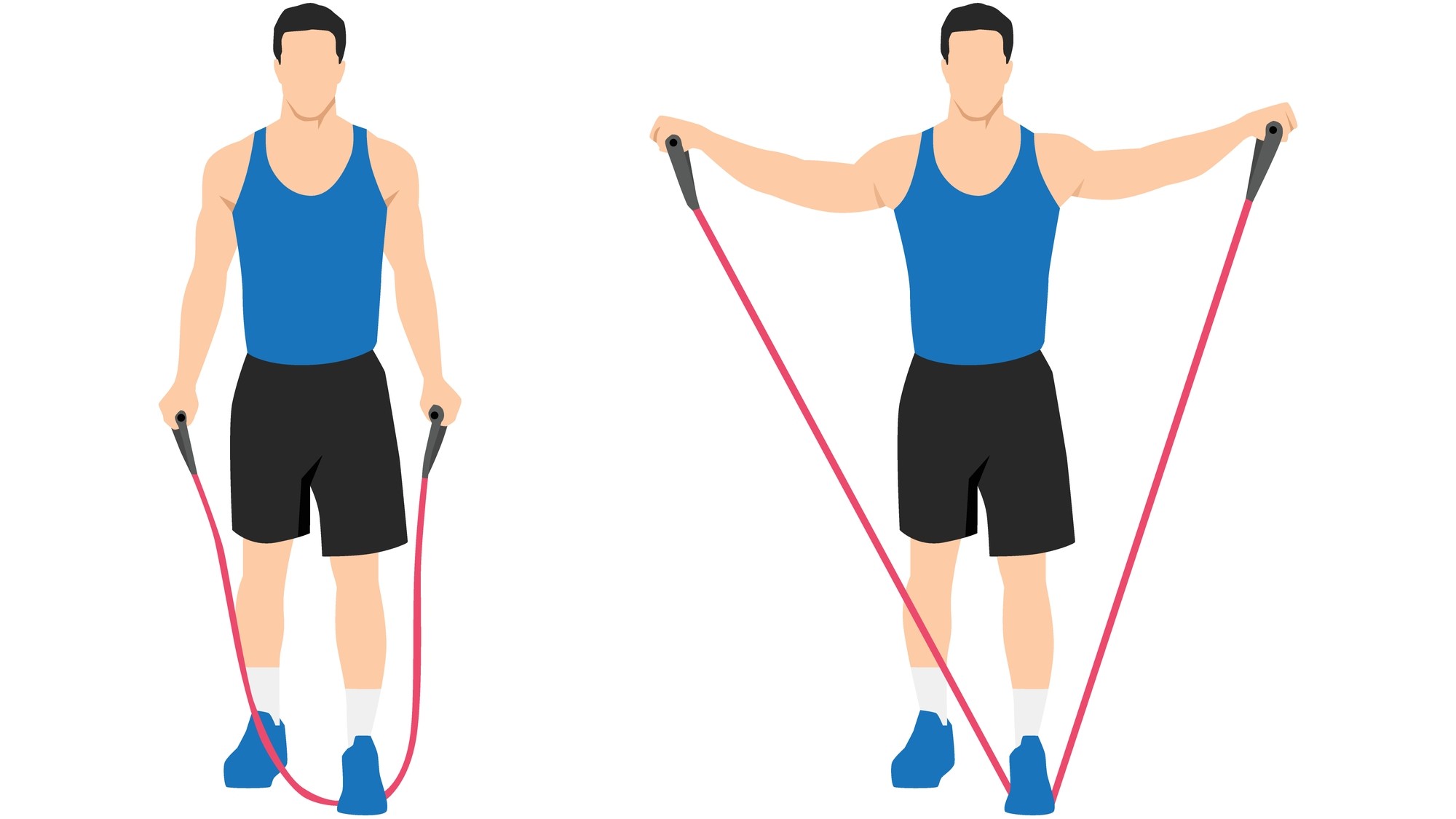
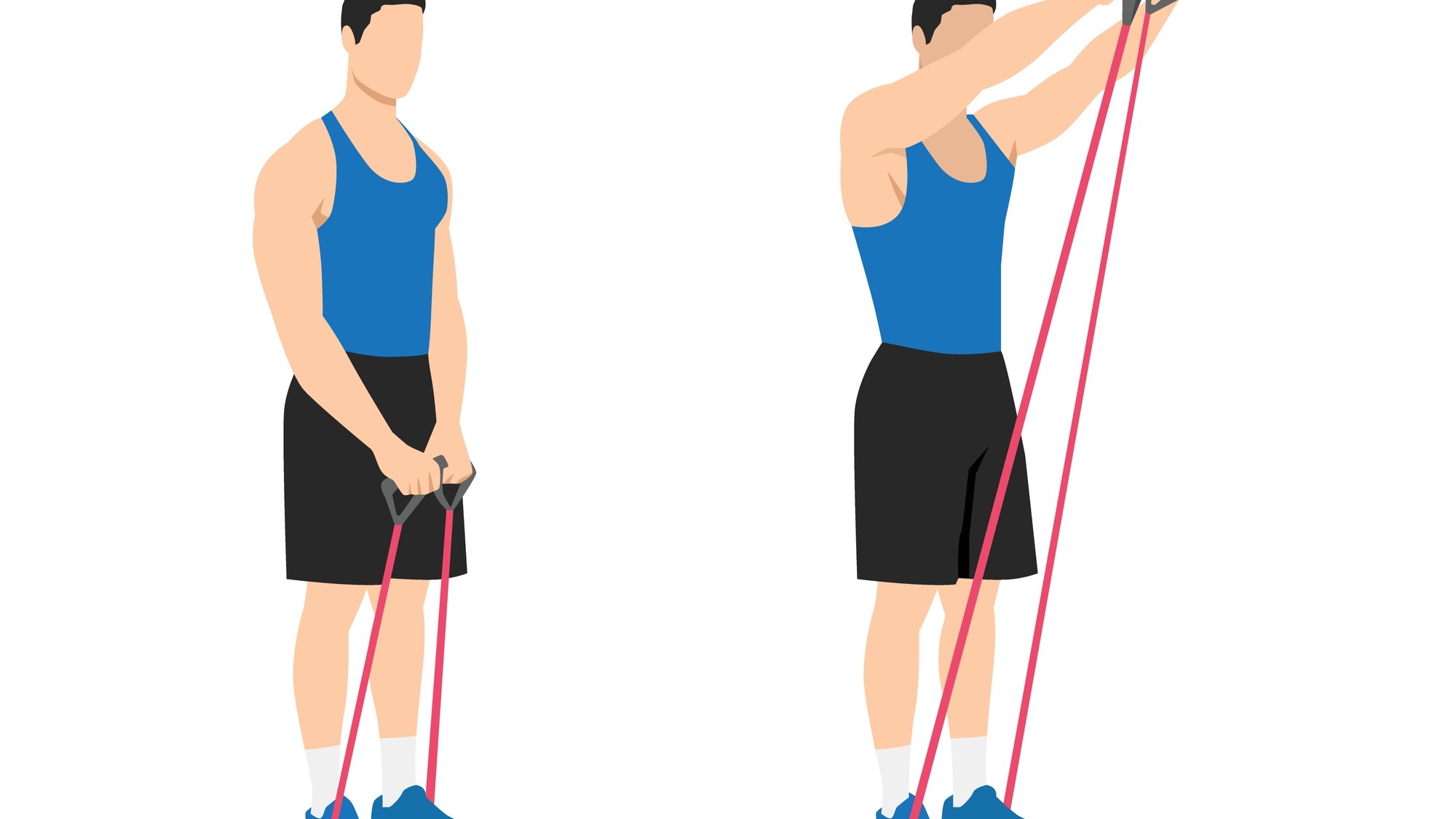
Stand with your feet shoulder-width apart and one end of the band locked underneath your feet. Hold the other end of the band shoulder-width apart using an overhand grip. Engage your core muscles, then drive the band outward to shoulder height for your lateral raise while maintaining a soft bend in your elbows. Lower the band down for one rep. On your second rep, draw the band forward to shoulder height, then lower the band back to the starting position for one rep. Continue alternating without arching your back or throwing your weight into the exercise.
4. Banded plank row: Back and core
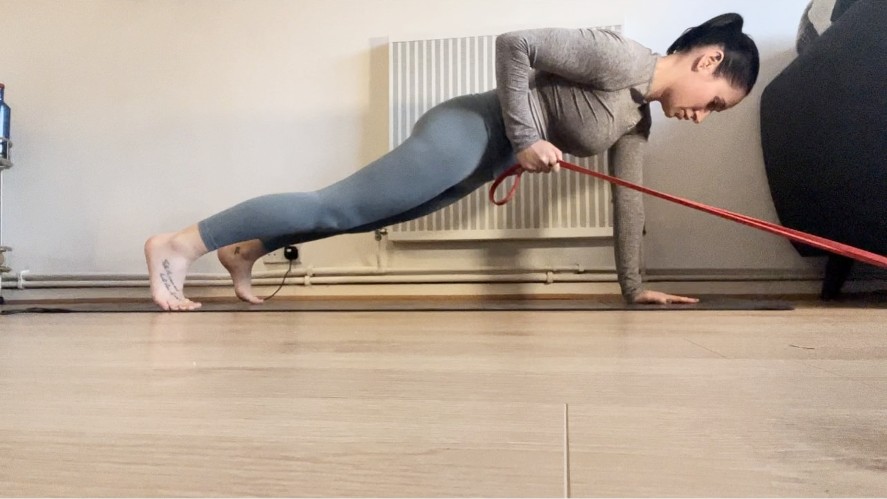
Wrap a resistance band around a stable pole, chair leg, or squat rack. Start in a push-up position with both shoulders stacked over the wrists and hips aligned with your shoulders, with the band in front of you. Engage your core, then grip the resistance band with your right hand and pull it toward your right hip. Switch sides every rep or halfway through your reps or time cap.
If you prefer, add a push-up after every rep. You can learn how to do a push-up properly here. Holding the band closer to the anchor point will make the move harder, or bring your knees down to the mat if you’re new to the exercise.
5. Banded flyes
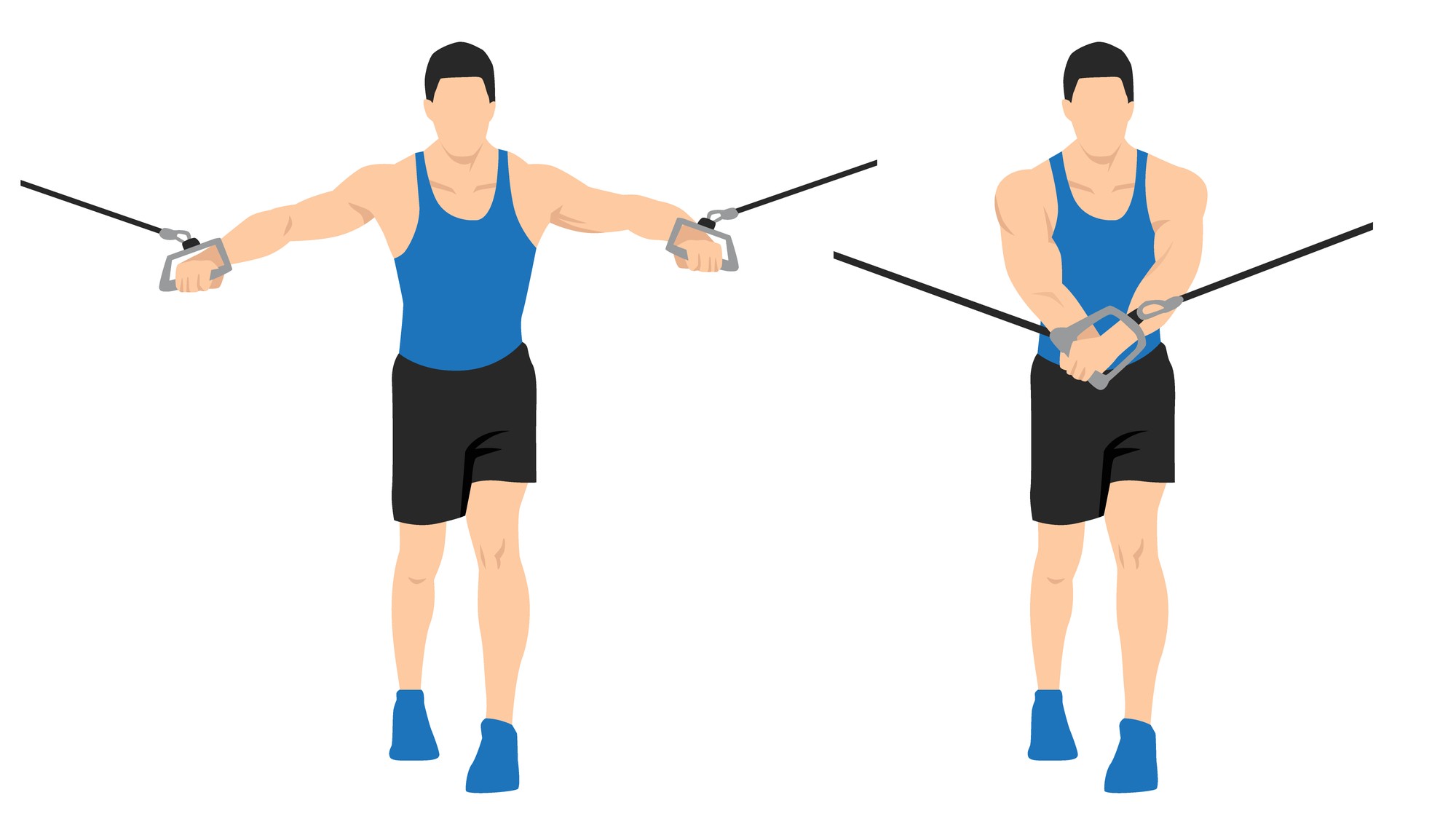
Loop the middle of the band around a stable and non-moving pole, squat rack, or similar. Hold both ends of the band and face away from the anchor point with your back to it. Engage your core and lift both arms to shoulder level. Open your arms to the sides and draw your shoulder blades together to open your chest, then draw your hands toward each other to meet in front of your chest. Maintain a soft elbow bend, and imagine you’re hugging someone. Squeeze your chest and pause, then open the arms again.
5-move upper body resistance band workout for beginners
45 seconds on/ 15 seconds off x 3-5 rounds
- Resistance band standing row
- Resistance band overhead press
- Resistance band front and lateral raises
- Resistance band plank row
- Resistance band flyes
Work for 45 seconds, rest for 15 and repeat each exercise for 3-5 rounds. You can change sides halfway through or alternate during the plank rows. Count your reps on the first round and try to match the reps on the remaining rounds. It should keep you consistent, but don’t rush to hit the reps — move with control and aim for at least 6 reps.
We recommend checking out our resistance bands buying guide above to determine the type of bands that will help you reach your fitness goals.
How to make upper body strength exercises harder using a resistance band
Many people ask whether resistance bands really work. The answer is simple — yes, they do, but as we mentioned before, the bigger and more powerful muscle groups can be trickier to overload using a band.
Whatever equipment you use, upper body workouts must follow progressive overload principles to effectively build and strengthen your muscles. Progressive overloading can help grow muscle (known as hypertrophy) by adding volume. As long as your muscles meet with challenge and volume, they can build and get stronger. Here are several ways to build muscle without lifting heavier weights and some techniques to consider below.
Slow exercises down and work your muscles through a full range of motion by controlling both phases — concentric (like the push or pull motion when your body meets most resistance) and the eccentric, which refers to the lowering phase of a push-up or lowering your arms during a lateral and frontal raise, for example.
- Eccentric loading
Slow the eccentric phase down by adopting a count of 3-4 seconds. You might achieve fewer reps per round, but your muscles will work closer to fatigue. Eccentric loading has been shown to help build muscular stability and control.
- Giant sets
You could choose to work for a set number of reps instead and perform the exercises back to back without rest. Working this way adds intensity by reducing your rest time and increasing time under tension.







